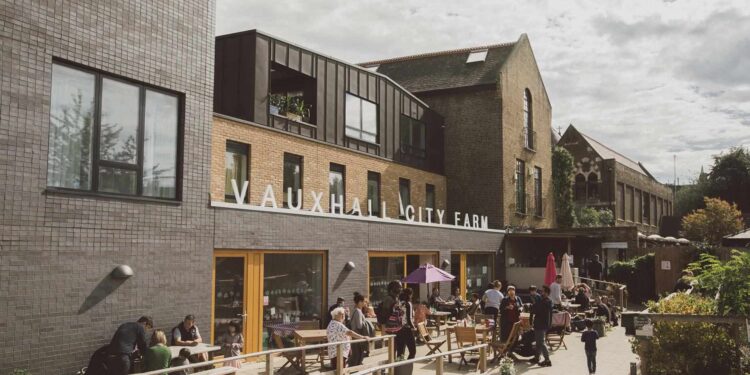Financing Your London Property Investment: A Guide to Mortgages and Funding Options
Securing the right funding is the bedrock of any successful property investment in London. Whether you’re a seasoned portfolio landlord or a first-time investor, understanding the diverse range of financing options, their criteria, and the current lending landscape is crucial for maximising returns and mitigating risk. In 2025/2026, with an evolving economic climate and mortgage market, a strategic approach to financing is more important than ever.
This in-depth guide will navigate the world of London property finance, covering traditional buy-to-let mortgages, current rates, affordability criteria, and exploring alternative funding avenues for various investment strategies.
1. Buy-to-Let (BTL) Mortgages: The Core of Rental Investment
For most residential landlords, a Buy-to-Let (BTL) mortgage is the primary financing tool. These differ significantly from standard residential mortgages.
Current Market Trends & Rates (Mid-2025):
- Stabilisation: After a period of volatility, BTL mortgage rates have largely stabilised, and some lenders have even seen modest reductions in recent months (e.g., average 2-year fixed at 75% LTV around 5.24% in July 2025, 5-year fixed around 5.19% for all lenders, with some premier products slightly lower).
- Lender Flexibility: Some lenders are increasing maximum Loan-to-Value (LTV) ratios (e.g., HSBC recently to 80% for loans up to £400,000) or easing stress rates to boost affordability, making BTL property more accessible.
- Product Variety: A range of fixed-rate (2, 3, 5, 10 years) and variable-rate products are available, often with various fee structures (e.g., flat fees, percentage of loan, or fee-saver options).
Key BTL Mortgage Criteria:
- Higher Deposit Requirements: BTL mortgages typically require a larger deposit than residential mortgages. Minimums are generally 20-25% LTV, with the most competitive rates usually requiring a deposit of 35-40% LTV (i.e., 60-65% LTV).
- Interest Cover Ratio (ICR): This is the primary affordability test for BTL lenders. They need the expected rental income to cover a certain percentage of the mortgage interest payments (at a ‘stress test’ rate, which is higher than the actual product rate).
- Typical ICRs (2025):
- Basic rate taxpayers: Often 125% of the mortgage interest.
- Higher/additional rate taxpayers: Often 145% of the mortgage interest.
- Limited Companies: Often 125% of the mortgage interest, sometimes with slightly lower stress rates.
- Stress Rate: This hypothetical interest rate used in the ICR calculation is typically around 5.5% – 7.5% (varying by lender, product term, and borrower tax status). If the property’s rental income doesn’t meet the ICR at the stress rate, you may need a larger deposit.
- Typical ICRs (2025):
- Minimum Personal Income: While BTL mortgages are primarily based on rental income, some lenders still require a minimum personal income (e.g., £20,000 – £25,000 per annum) to ensure you can cover costs during void periods or unexpected expenses.
- Portfolio Landlords: If you have multiple properties, lenders will conduct a full portfolio assessment, looking at the overall LTV, income, and financial health of your entire portfolio. Some lenders have limits on the maximum number of properties or total lending exposure.
- Property Type: Specialist BTL lenders offer products for HMOs (Houses in Multiple Occupation), Multi-Unit Freehold Blocks (MUFB), and sometimes semi-commercial properties, often with slightly different criteria and rates.
Action Point: Work with a specialist buy-to-let mortgage broker. They have access to a wider range of products and can navigate complex affordability criteria to find the best deal for your specific circumstances.
2. Alternative Funding Options for London Property Investments
Beyond traditional BTL, several other funding options cater to different investment strategies, timelines, and property types.
A. Bridging Loans: Short-Term Solutions for Speed
Bridging loans are short-term (typically 1-18 months), high-interest loans designed to ‘bridge’ a financial gap, often used for quick purchases, auction properties, or properties requiring significant refurbishment before traditional mortgage finance is viable.
- Use Cases:
- Buying auction properties.
- Purchasing properties that are unmortgageable (e.g., no kitchen/bathroom) for refurbishment.
- “Chain-break” finance for quick purchases before a sale completes.
- Development projects where phased funding is needed.
- Pros: Very fast to arrange, high LTVs (up to 75% for residential bridging, often 70% for commercial), flexible terms.
- Cons: High interest rates (often 0.5% – 1.5% or more per month), significant fees (arrangement fees, exit fees). You must have a clear ‘exit strategy’ (e.g., refinance onto a BTL mortgage, sell the property) to repay the loan.
- Ideal For: Experienced investors needing speed and flexibility for short-term projects.
B. Commercial Mortgages: For Non-Residential Property
If you’re investing in offices, retail units, warehouses, or mixed-use properties, you’ll need a commercial mortgage.
- Criteria: Different from BTL. Lenders assess the business viability of the property, the tenant’s covenant (financial strength), and the investor’s experience.
- LTV: Typically lower than residential (e.g., 50-70% LTV).
- Rates: Can be variable or fixed, often higher than residential BTL rates.
- Ideal For: Investors targeting long-term income from non-residential assets, or for purchasing portfolios of mixed-use property.
C. Property Development Finance: Fueling New Builds & Major Renos
For new build projects, large-scale conversions, or significant refurbishments (flips), specialist development finance is required.
- Structure: Typically disbursed in stages as work progresses, tied to valuation milestones.
- LTV/Loan to Cost (LTC): Loans are based on Gross Development Value (GDV) or Loan-to-Cost (LTC). Lenders may offer 60-70% of Gross Development Value (GDV) or up to 80-90% of development costs.
- Rates: Higher than BTL mortgages, reflecting the increased risk (e.g., 6-12%+ per annum).
- Lender Scrutiny: Lenders will rigorously assess the developer’s experience, the project’s viability, planning permissions, and exit strategy.
- Ideal For: Experienced developers or investors undertaking significant projects with a clear business plan.
D. Joint Ventures (JVs) and Equity Partnerships: Sharing the Load
For larger projects or if you have limited capital, partnering with other investors can be an effective funding method.
- Structure: Two or more parties pool resources (capital, expertise, time) for a project, sharing profits and risks according to an agreed structure.
- Pros: Access to larger projects, shared risk, ability to leverage partners’ skills/capital.
- Cons: Requires trust, clear legal agreements, and alignment of goals. Potential for disputes if roles/expectations aren’t defined.
- Ideal For: Investors looking to scale up, access projects beyond their individual means, or leverage specific expertise.
E. Private Funding / Peer-to-Peer Lending: Alternative Channels
- Private Funding: Sourcing capital from high-net-worth individuals, family offices, or syndicates. Often more flexible than traditional lenders but can require strong personal networks.
- Peer-to-Peer (P2P) Lending: Platforms connect investors (lenders) directly with borrowers (property developers/landlords). Investors gain passive income; borrowers get alternative finance.
- Pros: Can be quicker than traditional lending for borrowers; accessible to smaller investors for lenders.
- Cons: For borrowers, rates can be higher than mainstream BTL. For lenders, risk varies by platform and project, and funds are not covered by FSCS.
- Ideal For: Borrowers seeking flexible, non-bank finance; investors seeking passive income and diversification outside traditional markets.
3. Key Considerations for All Funding Options
Regardless of the financing route, keep these universal factors in mind:
- Credit Score: A strong personal and business credit history is paramount for securing competitive rates.
- Due Diligence: Thoroughly research any lender or funding partner. Understand all fees, interest rates, and terms before committing.
- Exit Strategy: Always have a clear plan for how the loan will be repaid, whether through refinancing, sale, or another method.
- Professional Advice: Engage an experienced mortgage broker, financial advisor, or legal counsel. They can save you time, money, and costly mistakes by finding the most suitable products and ensuring legal compliance.
Financing your London property investment is a strategic decision that shapes your returns. By understanding the intricacies of BTL mortgages and exploring the breadth of alternative funding options, you can secure the capital needed to build a robust and profitable London property portfolio.















